Frequently asked questions
Special | A | B | C | D | E | F | G | H | I | J | K | L | M | N | O | P | Q | R | S | T | U | V | W | X | Y | Z | ALL
C |
|---|
CopyrightHow does copyright affect UoL online courses?
You may find the following checklist useful when trying to identify whether your materials are in breach of copyright or not. This checklist is not legal advice or a complete guide to copyright. Its aim is to highlight copyright issues UoL Worldwide and its authors have to consider when creating learning materials for our distance learning students. Have you copied anything? E.g. text, images, diagrams, photos, website content? Is it third party material (someone else’s work)? Yes – there may be copyright issues. Is it your own original work? Yes – there may still be copyright issues. Your own work
Has your work been published in a book or journal? You may no longer be the copyright owner. You’ll need to check the agreement/contract you have with the publisher as copyright may have been transferred to the publisher. In any case you probably won’t be able to copy from the published book or journal as the publisher will own the copyright in the typographical arrangement (the lay out of the text) even if you still own the copyright in the text itself. Has it been published elsewhere, e.g. on a website? You’ll need to check the terms and conditions to see what the copyright position is and who now owns copyright. Has it been created in the course of your employment with your own federation member or any previous employer? If so the employer will own the copyright unless there is an agreement in place which allows you to retain the copyright in your work. You may need your employer’s permission before you can copy this material for UoL Worldwide distance learning courses. Third party material (other peoples’ works)
Have you copied from a free-to-view website? Have you checked the terms and conditions of use? Do they allow copying of the material you want to copy? Many free to view websites will allow you to copy limited extracts for private study or personal use but not for anything else. If not, you will need to get permission from the website copyright holder. Have you copied from a subscription website/database? (e.g. a password-protected database of journal articles) Have you checked the terms and conditions of use? Do they allow copying of the material you want to copy? They probably won’t allow copying other than for private study or personal use. If not, you will need to get permission from the website/database copyright holder. Have you copied from a print book or journal? You’ll probably need permission from the publisher. or It may be possible for UoL Worldwide to copy limited extracts from a book or journal, for use in distance learning course material, under the terms and conditions of its Copyright Licencing Agency (CLA) licence. Under the terms of the licence, limited extracts include:
You’ll need to contact UoL Worldwide for further guidance on this. Has the material you have copied been made available under a Creative Commons licence? You’ll be able to use it subject to the terms and conditions of the Creative Commons licence under which the material has been made available. There are six main Creative Commons licences. Further details can be found at the Creative Commons Licenses List. Has the material you have copied been made available under any other licence? You’ll need to check the licence terms and conditions. ImagesI want to copy a copyright protected diagram. Can I just re-draw it? No. Generally, adapting or re-drawing it is still copying and a breach of copyright. Can I draw it differently? No. This would be an adaptation and a breach of the third party’s copyright. | |
